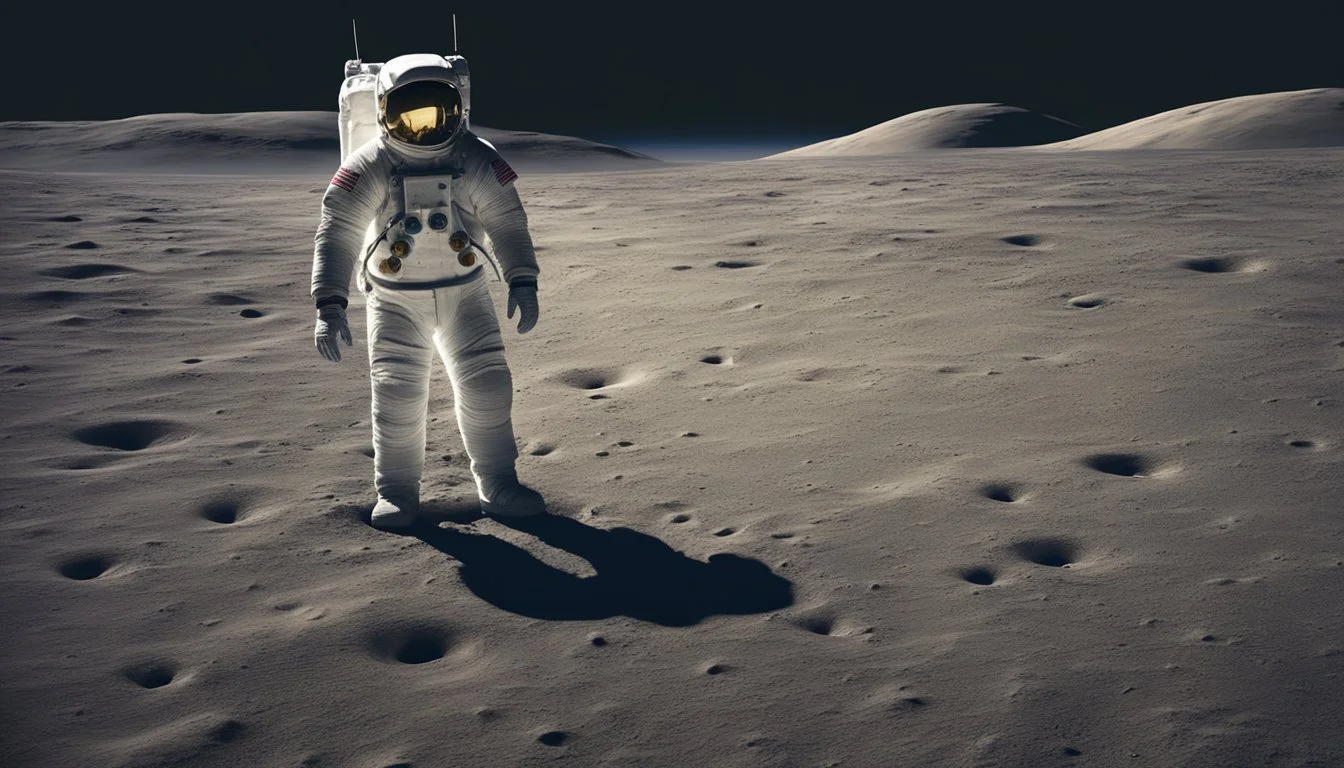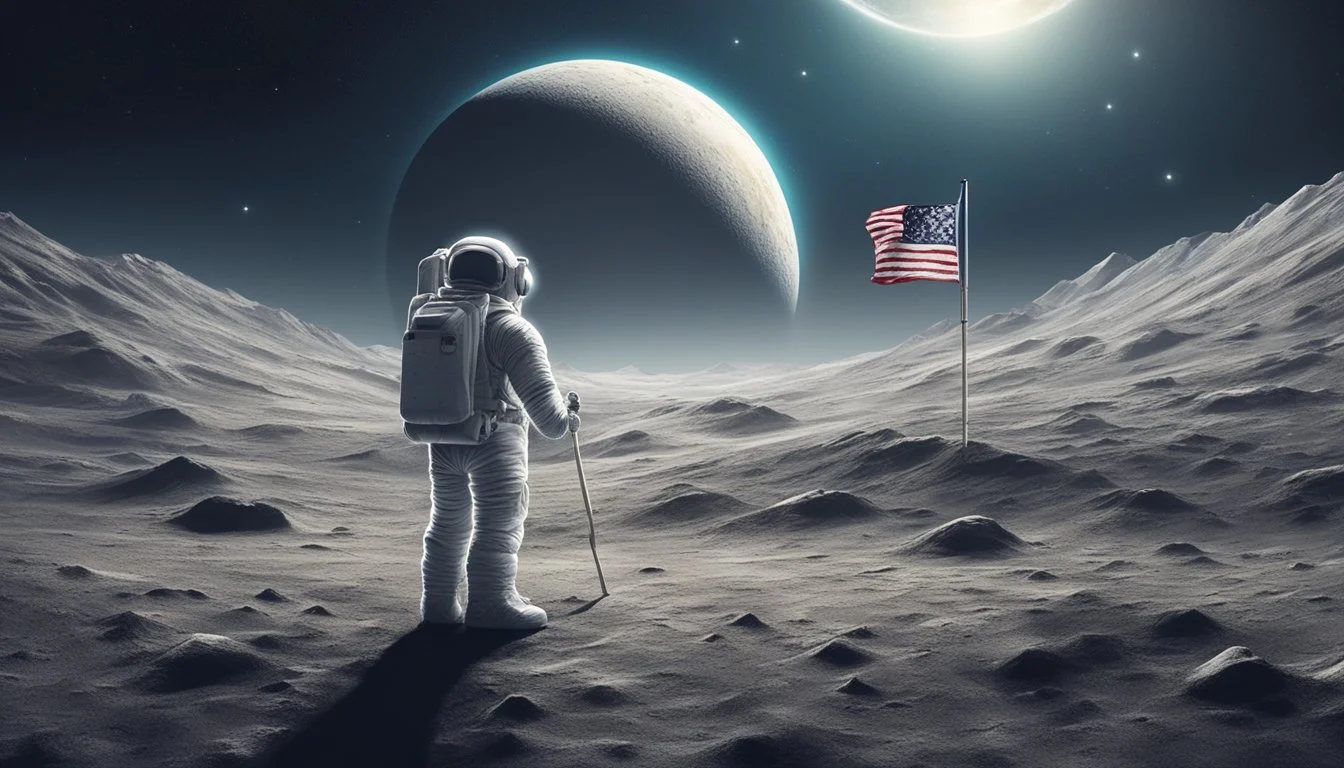Lunar Legends Speak: Unseen Footage Reveals Apollo's Untold Secrets
"In the Shadow of the Moon" is a captivating 2007 British documentary that offers a unique perspective on the United States' crewed missions to the Moon. The film showcases never-before-seen archival NASA footage and features intimate interviews with the surviving Apollo astronauts.
This award-winning documentary provides a firsthand account of humanity's greatest adventure, as told by the men who walked on the lunar surface. Directed by David Sington, the film brings to life the experiences of iconic figures such as Buzz Aldrin, Alan Bean, and Eugene Cernan.
The documentary not only explores the technical achievements of the Apollo program but also delves into the personal stories and emotions of the astronauts. It offers viewers a rare glimpse into the mindset of these extraordinary individuals who ventured beyond Earth's atmosphere and left their footprints on another world.
Origins and Development
"In the Shadow of the Moon" emerged from a desire to capture the personal stories of Apollo astronauts. The project aimed to preserve their unique perspectives on humanity's greatest adventure before it was too late.
Concept Creation
David Sington, the film's director, conceived the idea after realizing many Apollo astronauts were aging. He wanted to document their experiences firsthand. Sington approached NASA for cooperation and access to archival footage.
The concept centered on presenting unfiltered astronaut accounts. This approach differed from previous documentaries that relied heavily on narration.
Role of Filmmakers
Sington and his team conducted extensive interviews with Apollo crew members. They encouraged astronauts to speak candidly about their missions and personal reflections.
The filmmakers meticulously restored NASA's original film footage. This process enhanced the visual quality of iconic lunar images and rare behind-the-scenes clips.
They also decided to exclude present-day experts or narrators. This choice allowed the astronauts' voices to take center stage, creating a more intimate viewing experience.
Content Synopsis
The documentary offers an intimate look at the Apollo missions through the eyes of the astronauts who lived them. It provides a blend of historical footage and personal reflections.
Key Missions Highlighted
Apollo 11 takes center stage as the first lunar landing mission. The film showcases the iconic moments of Neil Armstrong and Buzz Aldrin walking on the Moon.
Apollo 13's dramatic story is explored, with Jim Lovell recounting the harrowing journey. The documentary touches on Apollo 14, featuring Edgar Mitchell's experiences.
John Young and Eugene Cernan's missions on Apollo 16 and 17 are covered, highlighting the final lunar expeditions. Harrison Schmitt, the only scientist to walk on the Moon, shares insights from Apollo 17.
Astronauts' Personal Stories
The film captures candid reflections from surviving Apollo astronauts. Buzz Aldrin describes the otherworldly experience of lunar exploration.
Jim Lovell reflects on the tense moments aboard Apollo 13. Edgar Mitchell shares his spiritual awakening during the mission.
Gene Cernan expresses the profound impact of being the last person to walk on the Moon. Alan Bean discusses how the experience influenced his post-NASA career as an artist.
The astronauts' stories reveal the human side of space exploration, from moments of awe to personal challenges faced during and after their missions.
Production Techniques
"In the Shadow of the Moon" employs masterful documentary filmmaking techniques to tell the story of NASA's Apollo missions. The film seamlessly blends historical footage with contemporary interviews to create an immersive viewing experience.
Use of Archival Material
The documentary heavily relies on NASA film footage and other archival sources to transport viewers back to the 1960s and 70s. High-quality footage from the Apollo missions, including on-board cameras and Mission Control recordings, provides an authentic look at the historic events. The filmmakers meticulously restored and enhanced much of this material, bringing new life to decades-old film reels.
Rare news clips and television broadcasts are also incorporated, offering context and capturing the public's reaction to the space race. These elements are skillfully woven together to recreate the excitement and tension of the era.
Narrative Structure
The film adopts a chronological approach, following the progression of the Apollo program from its early stages through the final lunar missions. This structure allows viewers to understand the step-by-step development of the moon landing efforts.
Interviews with Apollo astronauts serve as the narrative backbone. Their first-hand accounts provide personal insights and emotional depth to the technical aspects of space exploration. The filmmakers intercut these present-day interviews with archival footage, creating a dynamic contrast between past events and modern reflections.
The documentary maintains a focused narrative, highlighting key milestones and challenges without becoming bogged down in technical details. This approach keeps the story engaging for a general audience while still offering depth for space enthusiasts.
Impact and Reception
"In the Shadow of the Moon" garnered significant attention and praise upon its release. Critics and audiences alike responded positively to the documentary's intimate portrayal of the Apollo missions and their enduring legacy.
Critical Acclaim
The film received overwhelmingly positive reviews from critics. On Rotten Tomatoes, it holds a 95% approval rating, indicating widespread critical acclaim. Reviewers praised the documentary's stunning visuals, compelling storytelling, and emotional depth.
Many critics highlighted the film's ability to humanize the Apollo astronauts, offering a unique perspective on their experiences. The use of original NASA footage, remastered for the big screen, was particularly lauded for its visual impact.
Public Reaction
"In the Shadow of the Moon" resonated strongly with audiences, sparking renewed interest in space exploration. The documentary's theatrical release saw modest box office success, grossing over $1.3 million worldwide.
Viewers appreciated the film's focus on the personal stories of the astronauts, providing insight into their thoughts and emotions during the historic missions. Many found the documentary inspiring and educational, particularly for younger generations unfamiliar with the Apollo program.
The film's impact extended beyond theaters, becoming a valuable educational resource in schools and museums. It continues to be referenced in discussions about space exploration and human achievement.
Legacy and Significance
"In the Shadow of the Moon" left an indelible mark on space exploration history and public understanding of the Apollo missions. The documentary's impact extends beyond its cinematic achievements, shaping educational curricula and inspiring future generations of explorers.
Educational Contributions
The film serves as a valuable educational resource, bringing the Apollo program to life for students and space enthusiasts. Its firsthand accounts from astronauts provide unique insights into the technical and personal aspects of lunar missions. Many schools incorporate the documentary into science and history curricula, using it to spark discussions on space exploration, technology, and human achievement.
The vivid archival footage and astronaut interviews help viewers grasp the magnitude of the Apollo missions. This visual approach makes complex concepts more accessible, enhancing public understanding of space science and engineering principles.
Influence on Space Exploration
"In the Shadow of the Moon" rekindled public interest in space exploration, contributing to renewed support for lunar and Mars missions. The film's portrayal of the Apollo program's challenges and triumphs inspired a new generation of scientists, engineers, and astronauts.
Several space agencies and private companies have cited the documentary as a motivating factor in their pursuit of space exploration goals. The film's emphasis on international cooperation during the Space Race has influenced modern approaches to collaborative space missions.
By highlighting the cultural and scientific impact of seeing Earth from space, the documentary also spurred increased interest in Earth observation and environmental studies.




